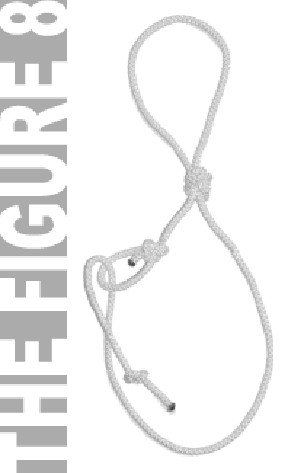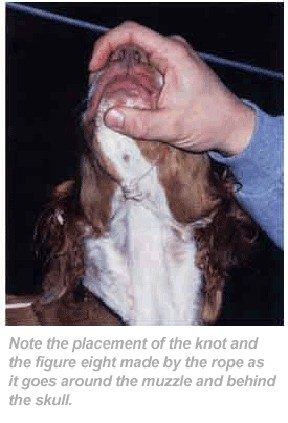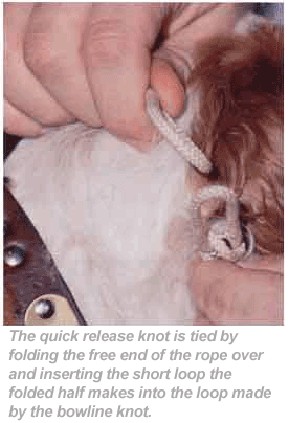



What is a Figure 8?



Resistance is defined as "to keep from giving in to." We like to alter that definition just a little when we apply it to dogs: Resistance is what happens when the dog has decided not to comply with what you expect it to do. Think of a teenager and the way they always seem to do the opposite of what you want, saying, Whatever" all the time instead of giving you a real reply. A dog showing resistance is pretty much saying the same thing as the teenager.
"Resistance is what happens when the dog has decided not to comply with what you expect it to do."
When a dog is being resistant, there is a checklist of aviors they go through while they're complaining. Of all the different things a dog will try, the last act before surrender and sub- mission take place is barking. Resist the temptation to yell the dog.
Ignore the barking and whining - if you respond to it by using your voice or showing emotion, then your dog has won by being able to demand your attention. Don't let your dog train you to respond to its cues. This barking and whining is part of the learning process and will stop as soon as the dog realizes it does him no good.
The ideal way to get rid of the barking is to just let them bark until they quit, but in today's world, most of us have neighbors who have tele- phones. Rather than wait until the neighbors call the police, we prefer to stop the barking using a wonderful little training tool called a figure eight. This is not a bark collar, and should not be thought of as one. Rather, it takes the resistance and frustration away from a dog by taking the mouth away.
After demonstrating the figure eight at a seminar some time ago, Rick was told a story by a former FBI agent in attendance with his dog. The FBI man stated that when the bureau interrogates someone dangerous, they will often restrain them by tying their arms and legs to a chair. Rarely does this convince a person to submit and give in - what usually breaks them is when the interrogator tapes their mouth shut. As soon as the mouth is taken away, resistance crumbles. It is much the same for our dogs. When we take the mouth away, we take the resistance with it.
So what's a figure eight? It's a length Of 3/16-inch diamond braid cord, 42 inches in length. The correct cord can be purchased at most any hardware store - ask for starter cord, for it's the same kind of cord used for pull-starting a small engine. This diamond braid cord has a slightly rough texture, making it easier for the dog to feel. When you on cut the cord, be sure to use a match or lighter to seal off the ends so they won't fray. Make a two-inch loop tied with a bow-line knot at one end. Then tie a large loop using an overhand knot farther up the rope, leaving about three inches of space between it and the bowline knot. The large loop can be adjusted as needed to fit individual dogs.
"As soon as the mouth is taken away, resistance crumbles. When we take the mouth away, we take the resistance with it."
To put this on the dog, slide the large loop over the muzzle, with the overhand knot sitting under the center of the lower jaw near the throat. This loop needs t 0 be positioned all the way up the muzzle, close to where it meets the head. The loop shoiikl fit close to the corners of the lips and be adjusted snugly enough so that the dog can't open its mouth more than slightly but not so tight as to tie the mouth shut. The dog should still be able to pant and drink water. Once this is on the muzzle, be sure that the lips are not pinched in any way. To tie the figure eight on, bring the bowline loop up around behind the dog's ear on one side, keeping it tight and right up behind the skull. With your other hand, take the free end and double it over so it forms a loop that will just reach the bowline end. Next, slip the loop into the bowline knot. Do not pull the free end all the way through. Let go of the bowline end, and snug the other end up by pulling on the end of the loop where it goes through the bowline. Be sure this stays snug and right behind the skull. The loop you made with the free end should be about an inch or so in length where it passes through the bowline. When this is pulled up tightly, use one hand to pinch it together to keep it tight. With the other hand, form another small loop with the excess of the free end, slipping it through the loop you're pinching shut. While holding the end of this second loop, push the balance of the other loop down toward the dog's neck, locking the knot snugly. Tuck the remainder of the free end under the collar so the dog is less likely to work the figure eight loose with its paws. To release the knot, just take the free end from under the collar and pull. The whole thing will come untied, and then all you need to do is slip it off the dog's muzzle. Properly adjusted, this allows the dog to drink and pant, without allowing an open mouth.
The best place to put the figure eight on a dog for the first time is on the stakeout chain. The dog is more confined and can't escape to the doghouse. Instead, the dog has little choice but to work things out, and it already knows what is expected while on the chain. Once a dog fully under- stands what the figure eight is for while on the chain, you can use it in the field if the dog wants to vocalize around birds, or in the house when the dog is being rude and resistant. Alway put it on when the dog is resist- . S ing, and remove it when the dog stops complaining. Arid obviously, retrieving while wearing a figure eight is not going to happen, so set up your training sessions accordingly.
When a dog has learned what the figure eight is for, it can be used in most any situation where resistance is shown and' compliance is required. Again, never leave a dog unattended while wearing a figure eight. This is not just about safety - if you aren't available to remove it when the dog complies, then it no longer acts as a training aid because the dog doesn't learn how to get you to take the figure eight off. The initial reaction of most dogs to figure eight is to try their best to get the rid of it. They will work at it with their paws, roll over on the ground and try to rub it off, and generally pout. Expect this and ignore it. You may need some practice to find just the right adjustment for the figure eight so it will stay on, as well as some practice tving the knot. When a'dog barks with the figure eight on its muzzle, the texture of the diamond braid rope provides incentive for the dog to keep its mouth closed. It is miIdly abrasive, but only if and when the dog chooses to fight it. This teaches the dog to make an appropriate choice by learning to turn off stimulation. As long as the mouth remains closed, there is no pressure. The dog learns that barking turns on the pressure, and stopping the bark turns it off.
While many dogs learn this very quickly and submit, there will be those that will choose to fight it. This can cause some swelling and/or abrasion across the dog's nose. If you observe this with your dog, please keep in mind that the dog is totally respon- sible for turning off the stimulation. It is completely the dog's choice - it can keep barking and be uncomfortable, or it can be quiet and comfortable. The best thing you can do is stay out of it altogether, and just observe. Do not deprive your dog of the conse- quences of its behavior. In some very rare cases, the dog may not give into this, and in this case, an electronic bark collar is recommended. Never leave a figure eight on a dog when you are not going to be available to remove it. Part of the learning process consists of the dog figuring out how to turn off the pres- sure, so when the dog is quiet and not trying to bark or otherwise be resistant, you should take the figure eight off.
At the first sign of wanting to resist again, put it back on. Calm and quiet takes it off, and noise puts it on. As you continue to repeat this process, your dog will understand that when it barks, it is asking you to put the figure eight on. Before long, the dog will see you pick up the cord and will stop before you even get close enough to put it on. Taking the mouth away from the dog takes away the last remnant of resistance. This can be useful in numerous situations, and barking is not the only one. If you have a dog 'in the kennel that spins in circles (see our column "Kennel Manners" in a previous issue), often simply putting a figure eight on the dog will cause it to settle and relax. Another good use for a figure eight is as a muzzle on a dog that acts aggressively around other dogs. It's hard to bite' if your mouth won't open, and the aggression also comes with the consequence of the resulting dis- comfort from the figure eight rope. If you have two dogs that are trying to fight, put a figure eight on each of them and then put them together while you're there to supervise. Be certain that both dogs have already had the figure eight on and under- stand it before you try this. Again, it is a training aid, not a miracle cure for bad manners. If you are consistent with the use of the figure eight, it will become a valuable training tool, and your dog will better understand that good manners are taken from the stakeout chain and carried into the field and bird work.